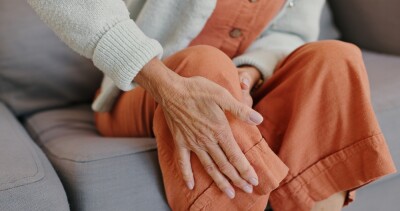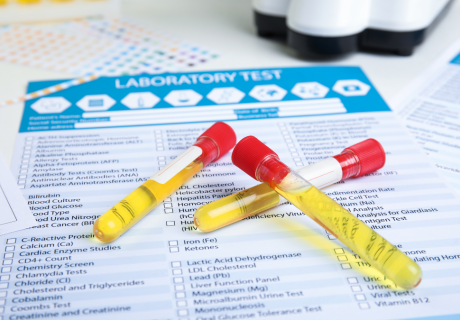Case Study Excerpt: Addressing Chronic Pain with Traditional Chinese Medicine

Patient Information
Ruth is a 57-year old woman living with her husband in a northern rural town. Her husband works long hours and is at his office most days, including weekends. She has two adult children who live locally and visit regularly. She was a stay-at-home mother until her kids graduated college, and recently started working part-time for a small local business, which allows her to work remotely with flexible hours.
- Race/Ethnicity: White/Caucasian
- Problems: Chronic insomnia and snoring, chronic back pain and headaches, history of depression and anxiety (worsens in fall and winter)
- Allergies: Seasonal
Vital Signs
- Height: 65 inches (5’ 5”)
- Weight: 27.1
- Non-fasting glucose: 115
- Total cholesterol: 189
- HDL cholesterol: 75
- Blood pressure systolic: 135 mm Hg
- Blood pressure diastolic: 84 mm Hg
Medications
- Anti-depressant
- Anti-anxiety
- Acetaminophen
- Multivitamin
Health Concerns
- Depression and anxiety
- Low energy
- Insomnia
- Overweight
- Monitoring cholesterol
Practitioner Perspective: Melissa Carr, BSc, Dr. TCM
Melissa’s philosophy for every patient is that their bodies are designed to heal. She would combine Western and Eastern approaches to diagnose and treat Ruth, with the goal of helping her find a healthy balance.
First Visit
Before the first visit, Melissa would have Ruth complete a detailed intake form, which she would then review and establish an initial impression for her Traditional Chinese Medicine (TCM) diagnosis prior to meeting. Melissa would also formulate specific questions in advance to fill in any blanks.
During the initial appointment, Melissa would spend about 60 to 90 minutes with Ruth asking questions and learning more about her specific concerns, as well as seemingly unrelated health issues. Questions would focus on her fatigue, appetite and digestion, food sensitivities, skin issues, breathing issues, sleep habits, and pain. Melissa would also ask for specifics about the location of Ruth’s headaches and type of pain she experiences. Further, Melissa would ask about supplement use and whether she tends tro be sensitive to new supplements or foods. She would also consider referring to a Ruth sleep specialist, as she exhibits many risk factors for sleep apnea.
Melissa would also perform a basic physical exam, specifically feeling Ruth’s pulse and looking at her tongue. In TCM, there are close to 30 different possible pulses that can be felt at the radial pulse at three locations and three depths on each wrist. The pulse may solidify the analysis of this patient’s potential TCM diagnosis or it may offer some unexpected information that prompts more questions. For the tongue assessment, the color, coat, shape, size, and any markings are noted, and much the same as the pulse palpation, will either align with the diagnosis or result in further review.
Her goal with the first visit would be to determine a TCM diagnosis for Ruth. Based on the information provided, Melissa said Ruth’s diagnosis looks like Lung Qi and Spleen Qi deficiency with Dampness and Phlegm accumulation. Many of Ruth’s symptoms align with the TCM organ of Lungs, including sadness, especially as it starts in the fall season, waking at 5 a.m., possible issues with letting go, a tendency to put up walls and close self in, catching colds frequently, and loud snoring. The Spleen Qi deficiency shows up as fatigue, worry, stomachaches, blood sugar issues, that she crashes around 11 a.m. and gets headaches around noontime. The Spleen, in TCM, when imbalanced and weakened, often results in symptoms of Dampness and Phlegm that may include weight gain, headaches, body aches, high cholesterol, and fatigue.
Part of Ruth’s diagnosis would also consider the five elements. Melissa would look at her physical, mental, and emotional health, as well as her personality. Melissa would consider Ruth Earth and Metal dominant. Earth patients tend to focus on caring for others, as Ruth did when she was a stay-at-home mother. On the other hand, Metal patients can be sensitive to the world around them and close in on themselves, which Ruth does by staying home and avoiding interaction with others. This diagnosis would prompt Melissa’s care approaches.
In the first visit, Melissa may also perform a mini treatment, and would establish an ongoing care schedule. When looking at chronic long-term issues, appointment frequency depends on how many practitioners the patient is working with. Typically, Melissa would want to see Ruth beginning twice a week for one or two weeks to get the ball rolling and help her feel supported.
Care Plan
Melissa would consider four legs that are the foundation of health:
- Nutrition
- Regular movement
- Good restorative sleep
- Joy
As a starting point, Melissa would prioritize treatment for Ruth, in her case acupuncture, to help calm her nervous system, relieve daily headaches, and improve sleep.
From there, Melissa would also make dietary recommendations, including foods that fit the TCM diagnosis. Lung Qi supportive foods include some pungent foods like garlic and onions, but not in excess. Spleen Qi boosting foods are sweet, but because Ruth has blood sugar issues, Melissa would recommend naturally sweet foods that are rich in fiber, like fruits and vegetables. Melissa would offer several suggestions for Ruth, including soups, stews, slow-cooked meals, and vegetables, including root veggies and leafy greens. The overall goal would be for Ruth to rely on less packaged foods and more nourishing options that can be prepped and frozen for later meals. Additionally, Melissa would encourage Ruth to consume more fiber to stabilize her blood sugar and look at including fish and essentially fatty acids in her diet to address her cholesterol, brain health, and inflammation.
Melissa would also recommend Chinese herbs customized for Ruth, which may include adaptogenic or Qi supportive herbs like reishi mushroom (ling zhi), astragalus (huang qi), and codonopsis (dang shen) or ginseng (ren shen). She may also use herbs that clear Dampness like poria (fu ling) and ones that help relieve pain like corydalis (yan hu suo).
Ruth may benefit from using a seasonal affective disorder (SAD) light. Melissa would recommend one for Ruth and have her use it at home in the mornings.
Melissa would also encourage Ruth to find something that brings her joy. For some patients, that may be something active like running and dancing or something creative like writing and drawing. Melissa would work with Ruth to find something that fuels her.
Customizing Approaches
Traditional Chinese Medicine is always personalized. For Ruth, Melissa would recognize that she is already exhausted and would therefore need to ensure she does not become overwhelmed. Melissa would break Ruth’s care plan into small, manageable steps and introduce her to new concepts slowly over time.
After the first visit, Melissa would provide Ruth with a detailed outline of her recommendations and supporting information, including dietary care plan as well as lifestyle considerations such as sleep hygiene, stress management, and exercise and movement, as well as treatment plan for her, which may include acupuncture, herbs, or supplements. In Ruth’s case, however, Melissa would distribute this information in stages. She would ask Ruth what she feels is most reasonable for her to start with and go from there.
Considering Ruth’s Earth and Metal diagnosis, Melissa would encourage her to take care of herself and emphasize the importance of self-care. She would also suggest Ruth enlist a health coach, friend, or family member to help keep her on track and serve as a point of checking in. Melissa said Ruth needs someone continuously there to support her on her journey and keep her moving forward with small steps.
Long-Term
Looking ahead, Melissa would work with Ruth once a week for four to eight weeks to establish a good baseline and then go from there. Appointment frequency would depend on how well Ruth was able to incorporate homework. The more Ruth could achieve at home, the less in-office support she would need.
Going forward, Melissa would want to help Ruth reach a healthy weight, focusing on finding balance in all areas of her wellbeing. Melissa would not focus on a specific number on the scale or measurement, but rather help Ruth find her healthy body and weight for herself. Helping Ruth lower her blood sugar levels would be a long-term focus.
Additionally, using acupuncture and herbs, Melissa would help Ruth to wean off the daily acetaminophen, which is not only hard on her liver but could contribute to an ongoing cycle of health issues and, over time, worsened headaches.
Melissa would also continue to work on sleep with Ruth, building on acupuncture, herbs, diet, and lifestyle, so she can feel more rested.
Overall, Melissa would want to help empower Ruth to feel like she can trust her body and learn that her body is designed to heal. Melissa’s basic philosophy for every patient is that their bodies are designed to heal, and she would try to help Ruth f ind her ability to be healthy.
Editor's Note: This is an excerpt from the e-book, Holistic Approaches to Whole-Person Health: An Integrative Medicine Case Study. To access the full text, click here.




















SHARE